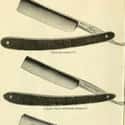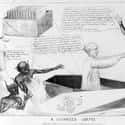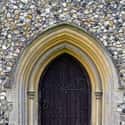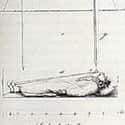-
(#1) Slicing And Burning The Feet And Putting Needles Under The Toenails
The feet are one of the most sensitive parts of the body – but only while a body is still alive. To determine whether someone was truly dead, physicians came up with all sorts of horrific foot tortures, including cutting corpses’s soles with razors. Another brutal method was shoving needles under their toenails or applying red-hot irons to the feet. If the body passed the "foot torture test," it could be safely buried.
-
(#4) Dumping Scalding Water On The Body
The scalding cure was exactly what it sounds like: dumping scalding water onto an unconscious body to see if it came back to life. An Englishman named Barnett devised a slightly more rigorous scalding test, which recommended burning a patch of skin on the arm to see if it blistered. According to Barnett, if the skin did not blister, there was no life left in the body. Along similar lines, some doctors recommended burning a body's nose to shock the person back to life.
-
(#14) Rubbing The Body With A Prickly Bush
A forensic specialist named Professor M. Weber developed his own test for death, which involved prickly bushes. He recommended rubbing a hard brush over the dead body’s skin a few hours after death. If the person was truly deceased, the skin would appear to have a parchment-like texture after the rubbing. Weber’s technique was so esteemed that he won a 5,000-franc prize from the Academy of Sciences in Paris.
-
(#11) Using The Gases Released By The Body To Reveal Invisible Ink
Doctor Séverin Icard came up with a death test in the late 19th century that almost seemed like a magic trick. Icard used acetate of lead to write the phrase “I am really dead” on a piece of paper. The words were invisible until he placed the paper on the corpse’s nose. If the body was releasing sulfur dioxide, present in putrefactive gases, the invisible words would appear on the paper like magic.
However, in a time before modern dentistry, decaying teeth or tonsillitis could also create sulfur dioxide, creating false positives.
-
(#7) Waiting For It To Start Rotting
The concept of a waiting mortuary was relatively simple: a dead body would be kept for several days in a mortuary to make sure that it started to decompose before it was buried. The concept became so popular that many sprung up in Germany in the late 1800s.
But in practice, the waiting mortuary had a few problems. For one, nurses didn’t enjoy watching over a ward full of corpses. But decomposition posed an even bigger issue. To mask the smell of rotting flesh, waiting mortuaries packed in flower arrangements between the corpses.
-
(#9) Leaving The Corpse A Bell To Ring Just In Case It Wasn't Dead
This tool, developed by German doctor Johann Taberger, was called a safety coffin. It built on an earlier model that placed a key in the pocket of every dead body so they could open the coffin from the inside. Taberger's version included ropes that linked the corpse to a bell above ground. If the "corpse" woke in the coffin, he could alert the living by ringing the bell. There was only one problem with Taberger's design: bloating caused by decomposition could cause the corpse to shift and set off false alarms that would horrify the living.
New Random Displays Display All By Ranking
About This Tool
Their bodies did not rot and even still warm, their stomachs gurgled and blood was still flowing. However, according to most medical assessments, these patients have completely died. is it possible? How did the doctor determine that they were actually dead? Confirming death is not easy. In Europe in the 18th century, people had more than 30 methods for making sure a corpos was dead, including clamping the nipple with pliers and putting leeches into the human anus.
It is certain that modern medical institutions do not think these methods are convincing. Over the centuries, humans have initiated a series of revolutionary new technologies to confirm death. The random tool brings us back to the 18th century to explore 14 weird ways to make sure the corpses were dead.
Our data comes from Ranker, If you want to participate in the ranking of items displayed on this page, please click here.
















